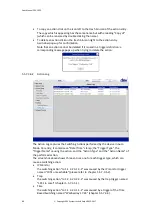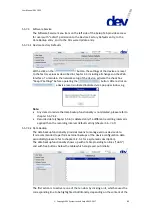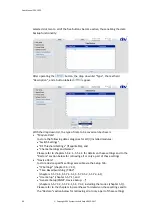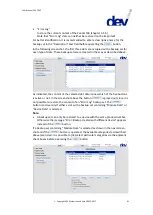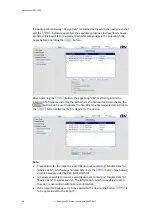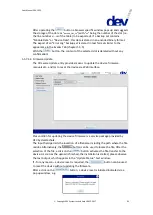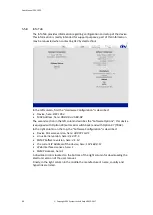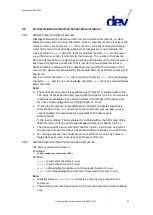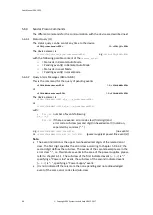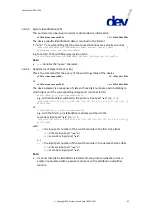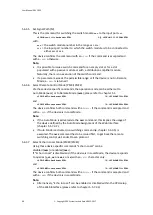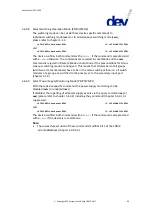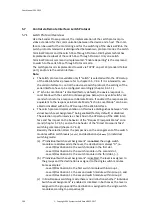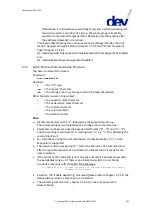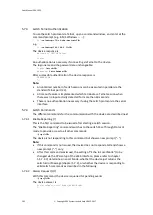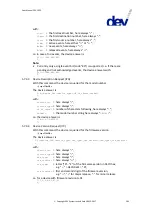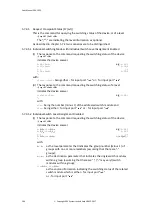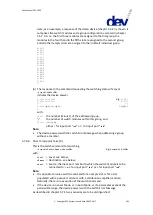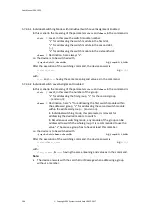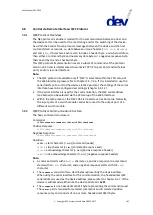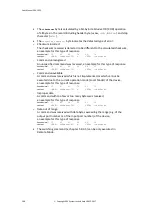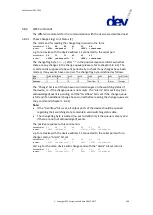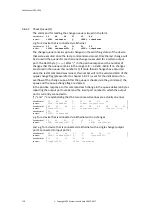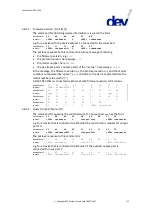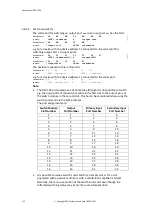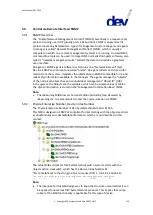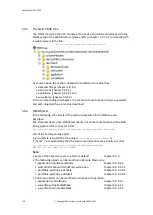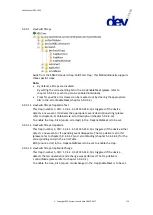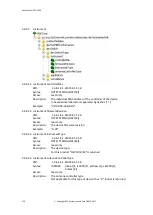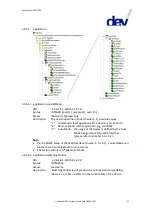
User Manual DEV 1953
102
Copyright DEV Systemtechnik GmbH 2015-2017
5.7.3
Leitch Telnet Authentication
To use the Leitch protocol via Telnet, open a command window, and enter at the
command prompt (e.g. in MS Windows
C:\>
):
C:\>
telnet
<sp>
<IP-of-the-device>
<CR>
e.g.
C:\>
telnet
<sp>
192.168.0.11
<CR>
The device response is
Welcome to LEITCH Telnet
login: _
An authentication is necessary if connecting via Telnet to the device.
The login name and the password are unchangeable:
login:
leitch
<CR>
password:
leitchadmin
<CR>
After successful authentication, the device response is
TERMINAL ON
>_
Note:
An unlimited number of Leitch sessions can be executed in parallel via the
standard Telnet port (23).
A timeout feature is implemented which terminates a Telnet session when
there was no input activity detected for more than 60 seconds.
There is no authentication necessary if using the Leitch protocol via the serial
interface.
5.7.4
Leitch Commands
The different commands for the communication with the device are described next.
5.7.4.1
Enable Reporting (?)
This is the first command to be issued after starting a Leitch session.
The "Enable Reporting" command switches to the Leitch Pass-Through Protocol
mode to provide access to all other commands:
>
@
<sp>
?
<CR>
The device is not responding to this command but shows a new prompt ("
>
").
Note:
If this command is not issued, the device does not respond at all and shows a
new prompt ("
>
") only.
After this command was issued, the setting of "Echo in Local Mode" (to be
changed via the CPH setup of the Web Interface, please refer to chapter
5.5.7.2.3) determines in Local Mode, whether the device just returns the
Leitch Error Message (chapter 5.7.2), or whether the device is responding to
valid Leitch commands as described in the following.
5.7.4.2
Alarms Request (Q?)
With this command, the device is queried for pending events
>
@
<sp>
Q?
<CR>
The device answer is
Q:<Lvl><Dest>,<Src>/A<##>,N<##>,R<##>
>_

